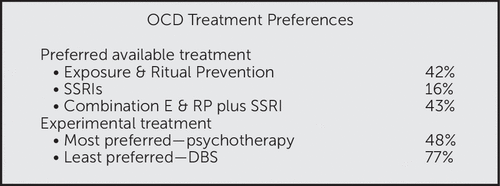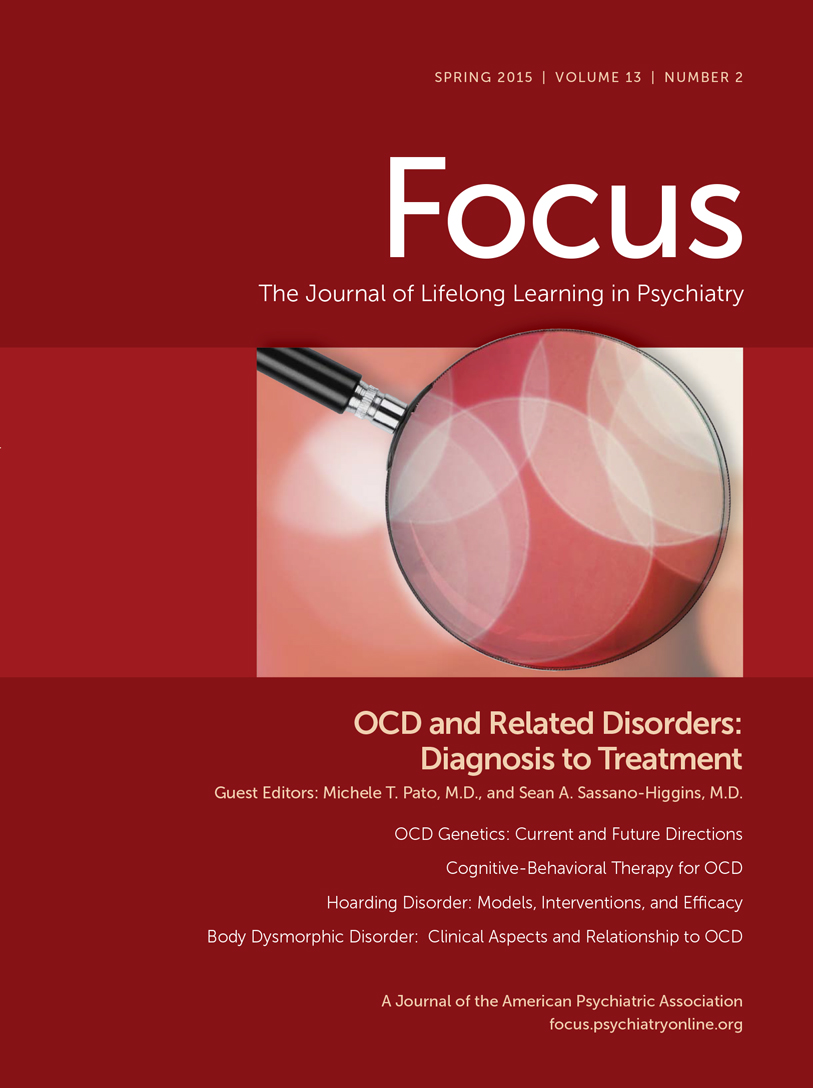Ask the Expert: Obsessive-Compulsive and Related Disorders
A colleague seeks your guidance on how best to employ combined treatment for obsessive-compulsive disorder (OCD), including how to do it, how to coordinate care, how to judge success, and what approaches you prefer.
In the treatment of an individual patient, diagnosis precedes treatment—or should. Ideally, each patient’s mix of OCD clinical symptoms, biomarkers, and personality characteristics would predict the response probability of available OCD treatments. In today’s reality, we face an empirical challenge of sorting among incompletely understood etiologic and clinical factors as well as treatment variables of availability, efficacy and tolerability, and patient and practitioner preferences.
Outcome measurement is clear. The Yale–Brown Obsessive Compulsive Scale (Y-BOCS), with scores ranging from 0 to 40, and the Patient Global Impression of Improvement, with ratings from “very much improved” to “very much worse,” are foundational. Y-BOCS scores >30 usually mean that adults do not work and children do not go to school. Very few patients achieve Y-BOCS scores of zero, but scores <11 are usually associated with tolerable impairment.
Cognitive-behavioral therapy (CBT) employing exposure and ritual prevention has greater efficacy and effectiveness compared with serotonin reuptake inhibitors (SRIs), including the tricyclic clomipramine. The combination of CBT and SRI adds little benefit beyond CBT alone (Figure 1).

FIGURE 1. Short-Term Efficacy of Cognitive-Behavioral Therapy, Serotonin Reuptake Inhibitors, and Their Combinationa
aData for adult OCD are from Foa EB, Liebowitz MR, Kozak MJ, Davies S, Campeas R, Franklin ME, Huppert JD, Kjernisted K, Rowan V, Schmidt AB, Simpson HB, Tu X: Randomized, placebo-controlled trial of exposure and ritual prevention, clomipramine, and their combination in the treatment of obsessive-compulsive disorder. Am J Psychiatry 2005; 162:151–161. Data for pediatric OCD are from Pediatric OCD Treatment Study (POTS) Team: Cognitive-behavior therapy, sertraline, and their combination for children and adolescents with obsessive-compulsive disorder: the Pediatric OCD Treatment Study (POTS) randomized controlled trial. JAMA 2004; 292:1969–1976. CBT, cognitive-behavioral therapy; Y-BOCS, Yale–Brown Obsessive Compulsive Scale; CY-BOCS, Children's Yale–Brown Obsessive Compulsive Scale.
Conversely, SRIs are more widely available than CBT with exposure and ritual prevention. Although generic drug cost is low, maintenance treatment costs mount over time, OCD worsens with medication discontinuation, and adverse effects are common with medication but are rare with CBT.
Patients prefer CBT to SRIs but express interest in their combination (Figure 2). Where good-quality CBT is available and patients are willing to try it, CBT alone is the treatment of choice because it has the greatest short- and long-term efficacy without common adverse events. Self-help computer-based CBT for OCD has been shown to be effective and may make CBT treatment more widely available.

FIGURE 2. Obsessive-Compulsive Disorder Patient Treatment Preferencesa
aData are from Patel SR, Simpson HB. Patient preferences for obsessive-compulsive disorder treatment. J Clin Psychiatry 2010; 71:1434–1439. J Clin Psychiatry. 2010 Nov;71(11):1434-9. DBS, deep brain simulation; E & RP, exposure and ritual prevention; SSRI, selective serotonin reuptake inhibitor.
In summary, a well-balanced presentation of evidence to patients is the best starting point. The lack of CBT availability may currently be determinative. Patient preference correlates with compliance, and no treatment works unless it is used. The combination of CBT and SRI when both are available is best for some patients, whereas other patients do best with either treatment alone. Treating OCD remains an empirical exercise, and providing the best possible treatment with the available resources remains both challenging and satisfying.



